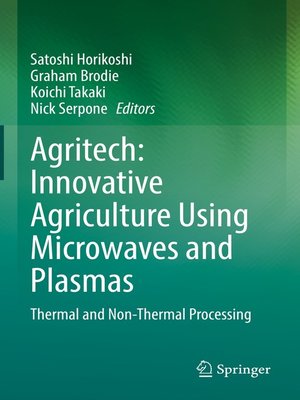Agritech
ebook ∣ Innovative Agriculture Using Microwaves and Plasmas: Thermal and Non-Thermal Processing
By Satoshi Horikoshi

Sign up to save your library
With an OverDrive account, you can save your favorite libraries for at-a-glance information about availability. Find out more about OverDrive accounts.
Find this title in Libby, the library reading app by OverDrive.



Search for a digital library with this title
Title found at these libraries:
| Library Name | Distance |
|---|---|
| Loading... |
This book describes innovative agricultural methods using thermal and non-thermal microwave or plasma energies.
Humans that were nomadic in the past can now stably obtain food by developing agriculture. Cities were formed as a result of remarkable development. Later, chemicals were introduced to agriculture to stabilize the food supply further. Natural products were initially used, but various artificial compounds have been developed for agriculture since the 1900s. To further improve crop productivity and diversification, gene recombination (genetic engineering) using biotechnology has progressed in recent years and continues to develop further. However, these technologies contain pesticide residues and pose safety risks. The innovative new agriculture explained in this book is based on the use of microwaves and plasma that do not rely on chemicals and genetic modification.
This is one of the first books focusing on the agricultural usage of microwaves. In addition, it is a technical book that incorporates plasma into agriculture from this perspective. The book covers microwaves and plasmas, which are completely different fields. Thus, it will be attractive to many readers who want to acquaint themselves with these alternative technologies and implement them. This book will be useful to a broad audience including researchers and technicians at Universities and practitioners in industries. It is made accessible to readers across different fields by including abundant figures and by limiting the use of equations to the possible extent.







